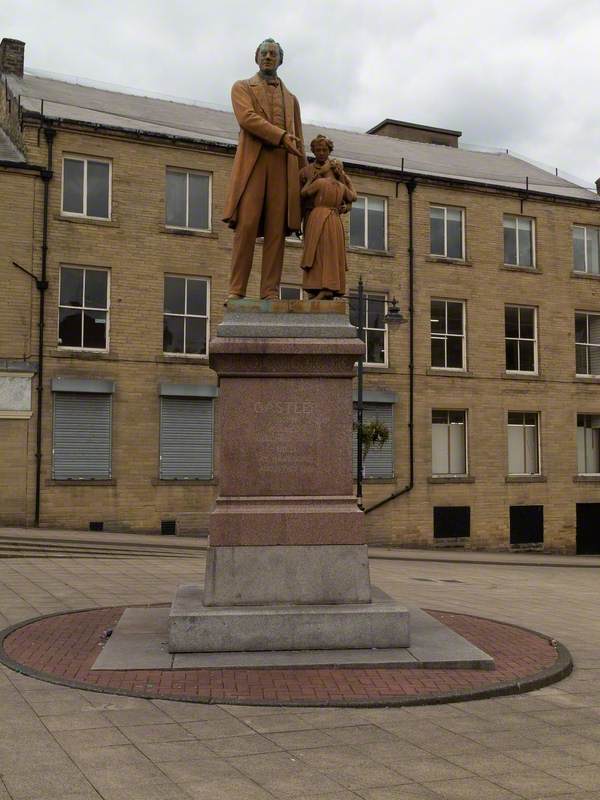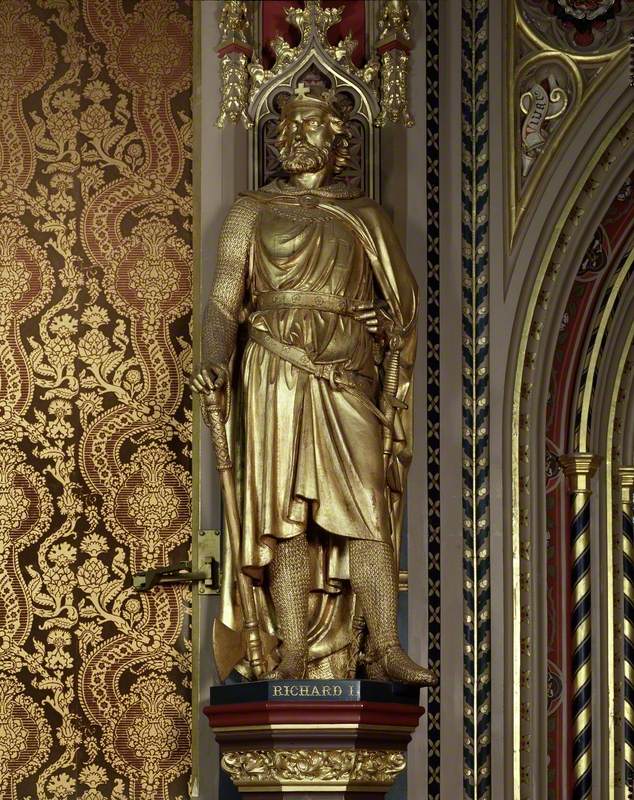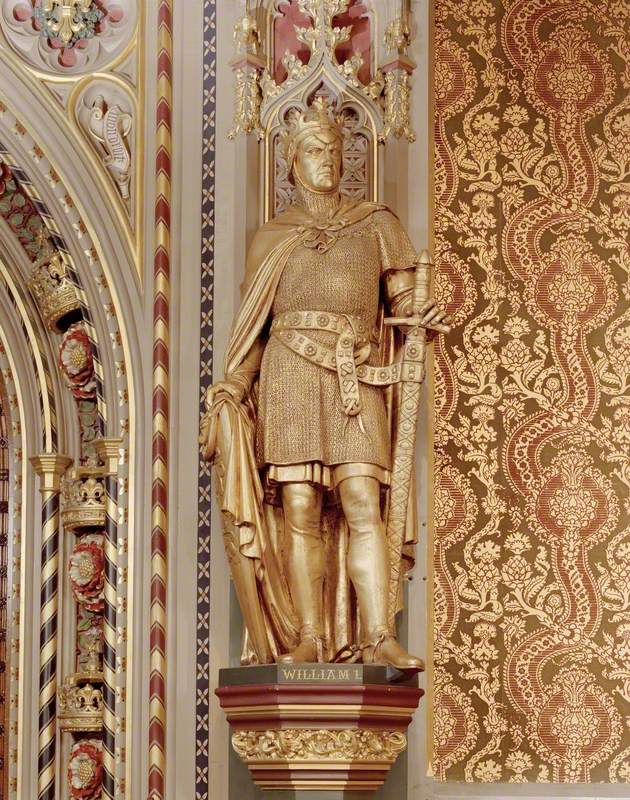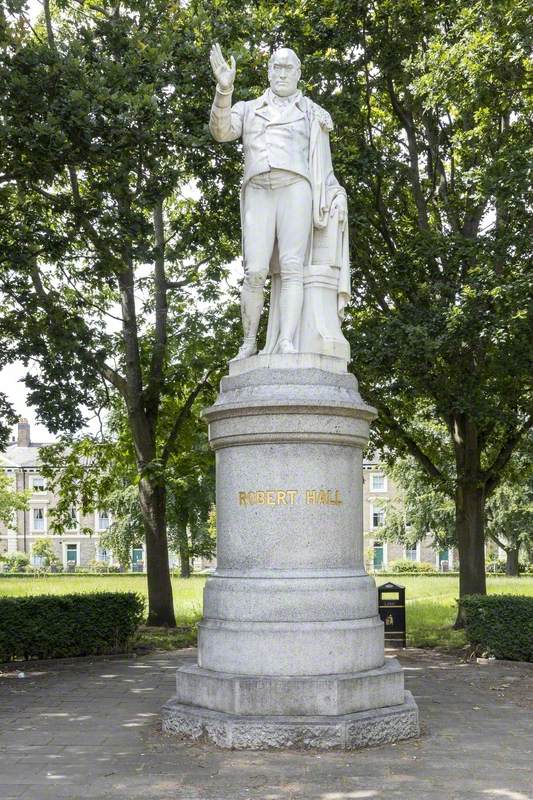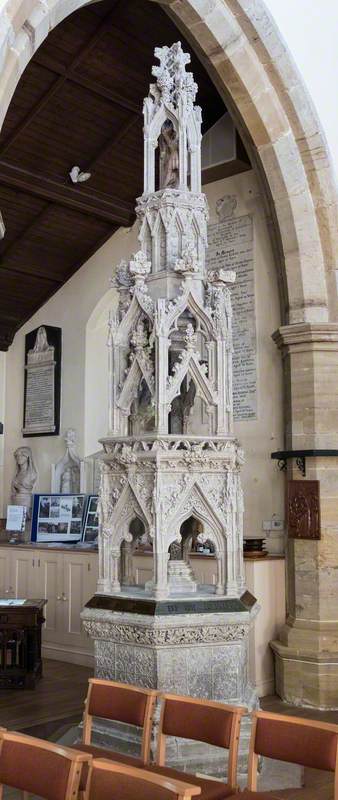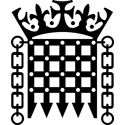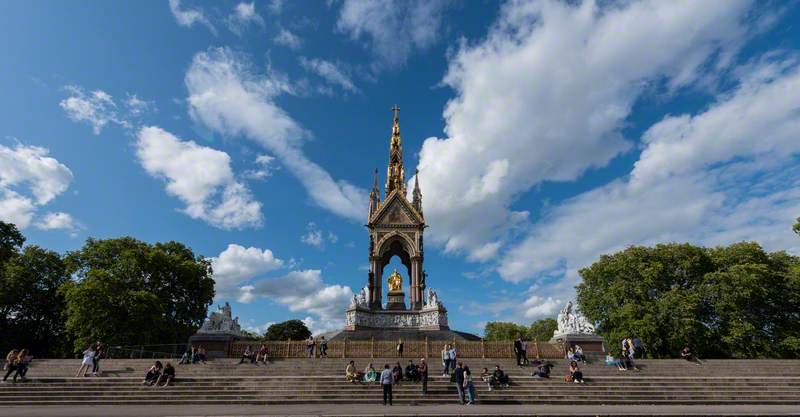
John Henry Foley (1818–1874) and Thomas Brock (1847–1922) and Henry Hugh Armstead (1828–1905) and George Gilbert Scott (1811–1878) and John Bell (1811–1895) and John Lawlor (1820–1901) and Patrick MacDowell (1799–1870) and William Calder Marshall (1813–1894) and John Birnie Philip (1824–1875) and James Frank Redfern (1837–1876) and William Theed II (1804–1891) and Thomas Thornycroft (1815–1885) and Henry Weekes I (1807–1877) and Farmer and Brindley (active 1851–1929) and John Kelk (1816–1886) and Francis Webb Sheilds (1820–1906) and Francis Alfred Skidmore (1817–1896) and John Richard Clayton (1827–1913) and Antonio Salviati (1816–1890) and H. Prince & Co. and Elkington & Co. and R. Masefield & Co.
John Birnie Philip was born in London, England on 23 November 1824. By 1841 he was employed as an apprentice carver. In 1842 he entered the Government School of Design at Somerset House in London where was taught by the painter John Rogers Herbert (1810-1890). Herbert introduced him to the architect and designer Augustus Welby Northmore Pugin (1812-1852) who. in c.1844-45, engaged Philip to assist him in the design of wood carvings for the new Houses of Parliament in London. Soon after, Philip set up his own studio at Hans Place, Knightsbridge, London and embarked on a career as an independent architectural decorator and ornamental sculptor. He later relocated his studio to Merton Villa, King's Road, Chelsea, London. In 1848-49 Philip visited Rome.
The project for which Philip is best known is the marble frieze of eighty-seven seminal sculptors and architects from history for the podium of the Albert Memorial in Kensington Gardens, London (1864-72).
Much of Philip's work was for churches and cathedrals. Among his public sculptures were those of Richard Oastler for Forster Square, Bradford, Yorkshire (1866); eight English monarchs for the Palace of Westminster, London (1861-69); Sir David Baird for Kalkata (Calcutta), India (1870); and of Sir Joshua Reynolds for Chelsea Town Hall, London (c.1875). Philip is known to executed a few busts including of Dr. Lyall, Dean of Canterbury (1858) and of Richard Cobden Halifax Chamber of Commerce (1867).
Notable among Philip's apprentices and pupils were Edwin Roscoe Mullins (1848-1907) and Thomas Stirling Lee (1857-1916).
Philip exhibited frequently at the Royal Academy in London from 1858 to 1875. He died of bronchitis at his home, 280A King's Road, Chelsea, London, on 2 March 1875.
Text source: Arts + Architecture Profiles from Art History Research net (AHRnet) https://www.arthistoryresearch.net/
